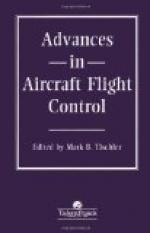|
This section contains 1,197 words (approx. 4 pages at 300 words per page) |

|
Aircraft in flight require adherence to a specific course for long periods of time, which can be tiring for the pilot. Likewise, steering ships on the water for hours is tedious and leads to crew fatigue. For more than a century, ships have had auto-pilots or devices that maintain a heading without human operators. Controlling an aircraft is similar but more complex because an aircraft operates in three dimensions and travels at considerably higher speeds. In the air, small deviations can become large errors more quickly.
The automatic control of aircraft was not considered until aircraft were capable of practical long distance flight. In the 1920s when radio navigation became available for aircraft, air travel became practical, eventually leading to the development of auto-pilot systems for aircraft. The first aircraft autopilots were based on gyros and were similar to those found in a ship...
|
This section contains 1,197 words (approx. 4 pages at 300 words per page) |

|


